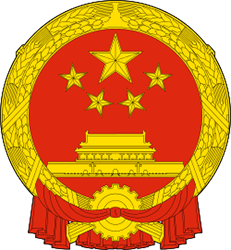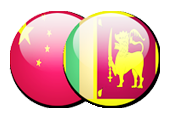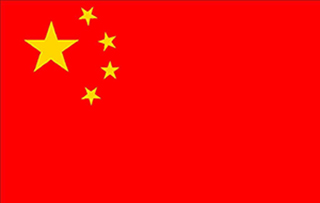National Flag
The National Flag of the PRC is a red rectangle emblazoned with five stars. The proportion of its length and height is 3 to 2. The upper left of the face of the Flag is studded with five yellow five-pointed stars. One of the stars is bigger than the others, with its circumcircle’s diameter being three-tenth of the height of the Flag, and is placed in the left; the other four stars are smaller, with their circumcircle’s diameter being one-tenth of the height of the Flag, encircling the big star on its right in the shape of an arch. China
National Anthem
The National Anthem was written in 1935, with lyrics by the noted poet Tian Han and music by the famous composer Nie Er. The lyrics are as follows:
Arise, we who refuse to be slaves;
With our very flesh and blood
Let us build our new Great Wall!
The peoples of China are at their most critical time,
Everybody must roar defiance.
Arise! Arise! Arise!
Millions of hearts with one mind,
Brave the enemy’s gunfire,
March on!
Brave the enemy’s gunfire,
March on! March on! March on, on!
This song, originally named March of the Volunteers, was the theme song of the film, Sons and Daughters in a Time of Storm. The film tells the story of those who went to the front to fight the Japanese invaders in northeast China in the 1930s.
Moving and powerful, the March of the Volunteers gave voice to the Chinese people’s determination to sacrifice themselves for national liberation, and expressed China’s admirable tradition of courage, resolution and unity in fighting foreign aggression. It was for this reason that the Chinese People’s Political Consultative Conference (CPPCC) on September 27, 1949 decided to adopt the song as the provisional national anthem of the People’s Republic of China (PRC), and the National People’s Congress (NPC) on December 4, 1982 officially decided to adopt the song as the National Anthem of the PRC.
National Emblem

The National Emblem of the PRC features Tiananmen Gate beneath the five shining stars, encircled by ears of grain and with a cogwheel at the bottom. The ears of grain, stars, Tiananmen and cogwheel are gold; the field within the circle is red, as are the ribbons festooning the bottom of the circle. These two colors traditionally represent auspiciousness and happiness.
Tiananmen symbolizes the unyielding spirit of the Chinese people in their fight against imperialism and feudalism; the cogwheel and ears of grain represent the working class and the peasantry respectively; the five stars stand for the great unity of the Chinese people under the leadership of the Communist Party of China (CPC).
National Day
The National Day of the People’s Republic of China is celebrated every year on October 1.
The Central People’s Government passed the Resolution on the National Day of the People’s Republic of China on December 2, 1949 and declared that October 1 is the National Day.
The PRC was founded on October 1, 1949 with a ceremony at the Tiananmen Square.
It is a public holiday in the People’s Republic of China to celebrate the national day. Public places, such as Tiananmen Square in Beijing, are decorated in a festive theme during the holiday.
Capital
Beijing is the capital of the People’s Republic of China and one of the most populous cities in the world. The metropolis, located in north China, is governed as one of the four municipality directly under the central government.
The city is located 39.56 degrees north latitude and 116.2 degrees east longitude. Covering an area of 16,807.8 square kilometers, Beijing lies on the north end of the North China Plain that is surrounded by mountains to its west, north and northeast. To its southeast is a plain that slopes gradually to Bohai Sea.
.
Climate and Temperature
Beijing has a temperate, semi-humid continental climate, characterized by short springs and autumns, hot and rainy summers, along with cold and dry winters. The average annual temperature range is 10°C to 12°C, with average low temperatures ranging from -7°C to 4°C in January; and an average high temperature of 25°C to 26°C in July, but the temperature can drop to as low as -27.4°C in the winter and soar to 42°C in the summer.
Language
Mandarin Chinese is the country’s official language.





















